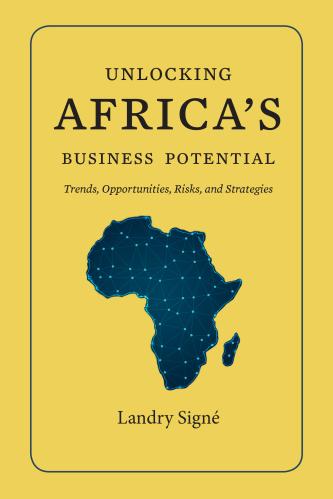This op-ed was originally published by Project Syndicate.
As massive online platforms have given rise to numerous virtual marketplaces, a gap has opened between the real and the digital economy. And by driving more people than ever online in search of goods, services, and employment, the coronavirus pandemic is widening it. The risk now is that a new digital industrial complex will hamper market efficiency by imposing rents on real-economy players whose daily operations depend on technology.
The premise of the Fourth Industrial Revolution (4IR) is that the tangible and intangible elements of today’s economy can coexist and create new productive synergies. The tangible side of the economy provides the infrastructure upon which automation, manufacturing, and complex trade networks rest, and intangibles—logistics, communication, and other software and big data applications—allow for these processes to achieve optimal efficiency.
More to the point, the tangible economy is a prerequisite for the intangible economy. Through digitalization, tangibles can become intangibles and then overcome traditional limitations on scale and value creation. While heavily transactional and capital-intensive, this process hitherto has been a positive mechanism for growth, providing some equity of opportunities for small and large countries alike.
We are facing an acute crisis of technological opportunity and access, owing to an invasive business model that has proven incapable of supporting equity and inclusion.
But this standard account of the 4IR omits the recent decoupling of the digital and real sectors of the economy. Digitally native companies that benefited from the suspension of traditional factors of production have been growing even faster than they did before COVID-19.
By the beginning of September 2020, Facebook, Amazon, and Apple’s share prices had more than doubled since the start of the pandemic, with Apple becoming the first company ever to achieve a $2 trillion valuation. And while shares of Netflix and Alphabet (Google)—the other so-called FAANG firms—hadn’t quite doubled, they were nonetheless trading at or near all-time highs. Meanwhile, ExxonMobil, the S&P 500’s oldest member and a former icon of the tangible economy, was driven out of the index by Apple’s decision to split its stock. Those who own and run the tech giants are making ever more money while the rest of the world continues to experience economic devastation.
With real-economy assets being positioned far below digital financial assets, a K-shaped corporate recovery has emerged. Digital firms can grow apparently without limit, whereas others’ growth remains circumscribed by the finite conditions under which they operate. This trend is not only challenging neoliberal assumptions about the creation of value; it is also pushing us toward a scenario in which government policies to redistribute value will no longer be plausible options.
To be sure, governments and some within the private sector have proposed remedies, such as a tax on digital assets, while proponents of a laissez-faire approach continue to insist that any form of government intervention will merely introduce more market distortions. But neither camp has offered enough evidence for its preferred policy.
We suggest three other solutions. First, government grants and subsidies can be used to promote technological diffusion, and to close the technology gap between platforms and small and medium enterprises. Rather than expecting the market to provide equitable access to technologies like artificial intelligence, governments can fund programs that reach smaller firms directly, such as through tax write-offs or other measures (as already happens with incentives for consumers to buy environmentally friendly cars). While such outlays would increase public debt in the short term, these costs would be offset by the higher productivity that would come with a more balanced distribution of economic power.
Second, we should be working toward a more agile, multistakeholder model of innovation, so that concerns about inclusion and representation are addressed without curtailing the pace of technological advance. The goal, here, should be to reduce the tensions between winners and losers across the platform economy’s new value chains. Several existing cases have demonstrated that proper representation of stakeholder interests enables policymakers to mitigate the harms and adverse unintended consequences of new technologies without sacrificing speed or flexibility.
Third, it is time to start identifying appropriate areas for “digital protectionism.” Just as some countries use trade tariffs to support nascent local production, digital tariffs could be used to foster local innovation ecosystems. This would not work everywhere. But in places that have reached some threshold of technological adoption and diffusion, such policies could encourage grassroots solutions, creating new community-based approaches to managing how technology is designed, deployed, and funded.
The post-pandemic world will be characterized by a limping economy, a generalized fear for the future, and a growing realization of all the ways that economic life has changed. Under the right conditions, technological diffusion, multi-stakeholder innovation, and digital protectionism could reduce people’s dependence on the multinationals that have been shaping the terms of technology for their own benefit, and with little consideration for the needs or values of specific communities.
We are facing an acute crisis of technological opportunity and access, owing to an invasive business model that has proven incapable of supporting equity and inclusion. The stakes are high, and the market won’t fix the problem. There are ways to ensure that the digital revolution benefits the many, not just the few; but they will require that we rethink how we pursue innovation and create value in the 21st century.
The Brookings Institution is committed to quality, independence, and impact.
We are supported by a diverse array of funders. In line with our values and policies, each Brookings publication represents the sole views of its author(s).










Commentary
Op-edThe digital revolution is eating its young
April 20, 2021